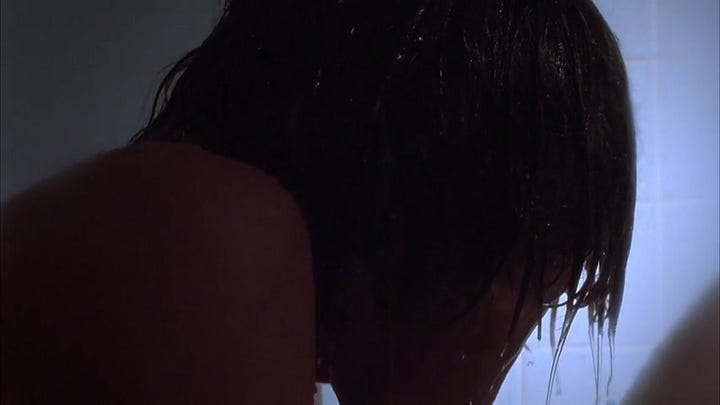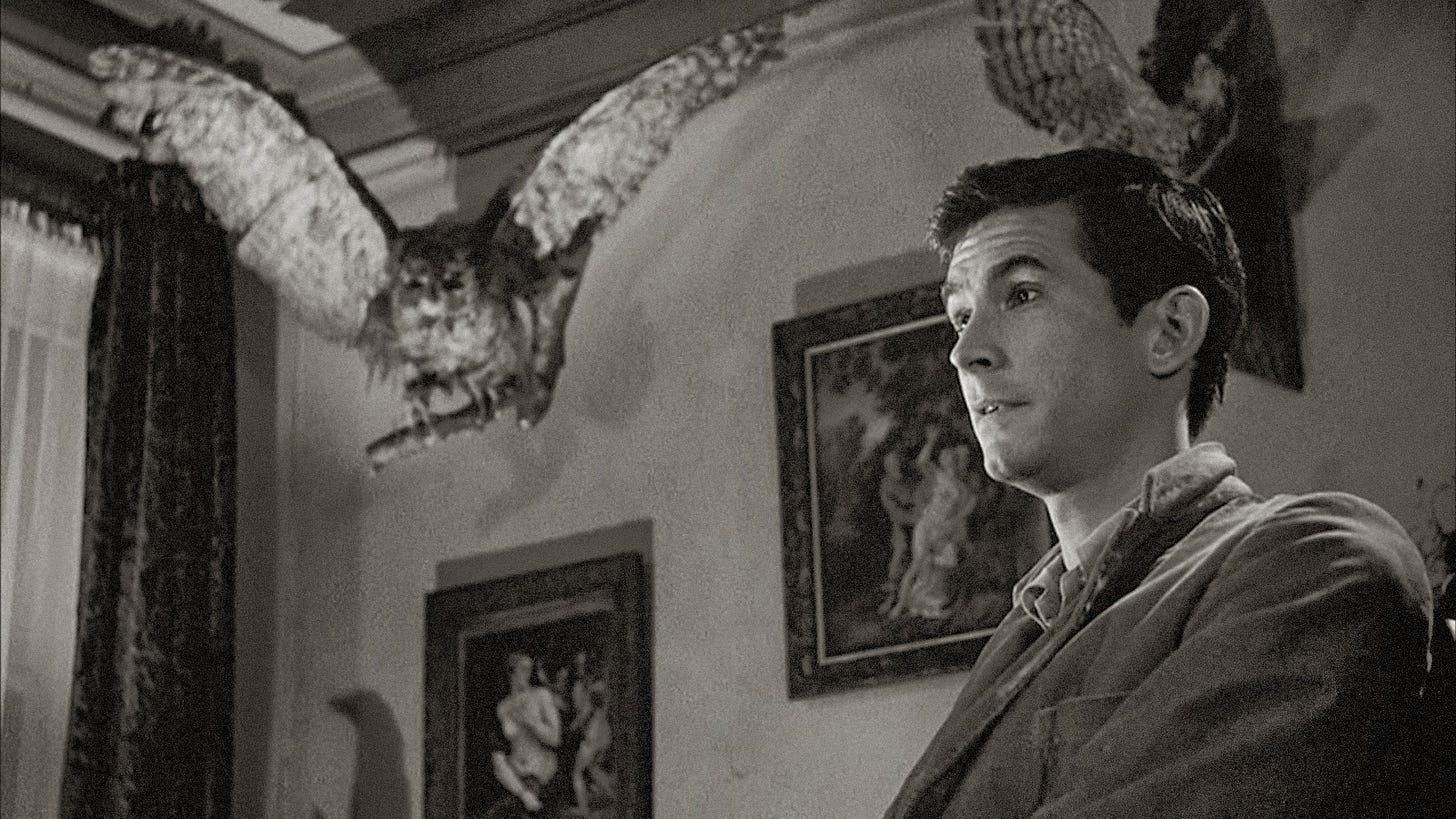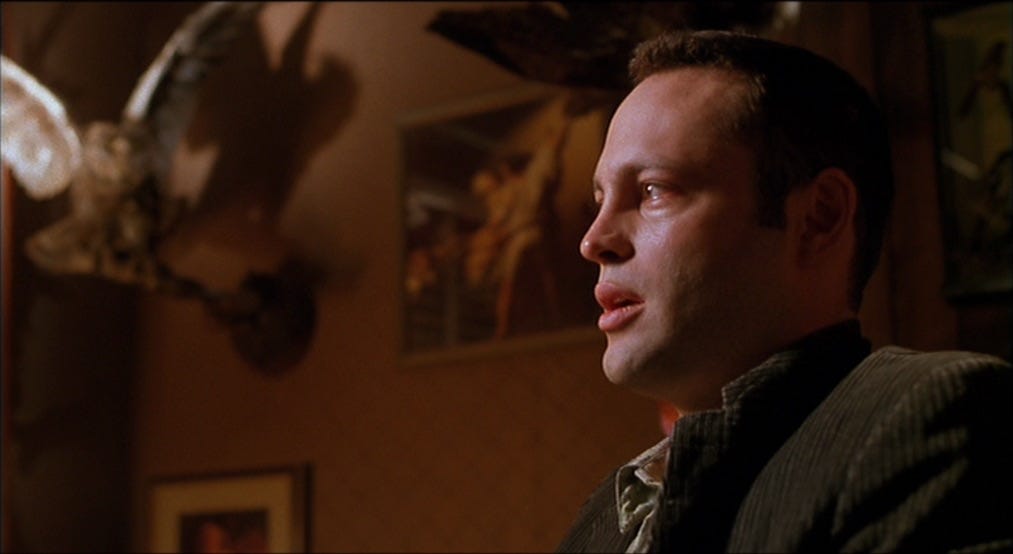Three Shots, and Oh So Many Echoes: 'Paranoid Park' (2007)
How Gus Van Sant packs decades of cinematic allusions and obsessions into one deceptively simple scene
SPOILERS AHEAD.
I.
The best and most revelatory scene of Gus Van Sant’s Paranoid Park (2007) occurs at roughly the midpoint of the film in a wordless, two-and-a-half minute scene consisting of but three shots. In terms of action and plot, very little happens. But cinematically, it presents a remarkably complex interplay between sound and image and a succession of references and callbacks to the director’s previous films at to those of another notable filmmaker. Let it wash over you.
II.
The nonlinear chronology of Paranoid Park is prompted by the disorganized thoughts of its 16-year-old protagonist Alex (played by Gabe Nevins), which he captures in his diary and which we hear in voiceover. At first blush, his hopping between time periods and topics betrays a teenager’s short attention span, but in actuality, Alex is being either intentionally or unconsciously evasive. At the center of his story is a traumatic event, one that he dances up to and all around before revealing, finally, that he had a hand in the accidental death of a security guard while trespassing in a Portland railyard.
In dribs and drabs, we learn that Alex fled the scene and did not report the incident. Instead, he raced to his suburban home, tossed the clothes he was wearing into the garbage, and headed for the shower. We gather that the boy is wrecked with guilt and fearful that authorities might discover his involvement, but he never relays that to us directly. We must instead infer it from his behavior, the terms he uses to couch his story, and, crucially, Van Sant’s expressionist rendering of the troubled boy’s state of mind.
Now would be a good time for headphones or earbuds. Short of that, I recommend cranking the volume. Several aural subtleties await.
In slow motion, Alex steps into the shower and closes the curtain behind him. He hangs his head to allow the water to cascade over him before pulling his hands to his face and sliding his body along the shower’s wall, ultimately coming to rest on his knees. It is a fairly straightforward image of a teen overcome.
Take a closer look, a closer listen. As he tugs the curtain, we hear what sounds like rushing water — a reasonable enough assumption given the location. But note how the sound of the water seems to be outpacing the spray we see within the frame. The image proceeds in slow motion while the soundtrack carries on at a normal clip.
A simple evocation of time dilating and contracting to convey the character’s emotional state, then? Not quite. Entering at around the 00:16 second mark is the faint sound of bird song, and shortly thereafter a whirring noise, like the spinning drum of a clothes dryer. Both of these curious sounds become louder in the mix as the scene unfolds, and the droning buzz seems to accelerate, growing higher in pitch in the process. Stranger still, it’s not one bird’s song we hear but that of several. Birds? In a suburban home’s bathroom? The fuck?!
III.
As it turns out, what we hear in this scene is not at all “sourced” in the diegetic world of Paranoid Park. Rather, it’s a piece of electroacoustic music called “Walking Through Resonant Landscape #2” by experimental composer Frances White, which is also featured in Van Sant’s 2003 film Elephant. You can hear its ominous drone throughout the film and especially at the 09:16 mark of this clip.
This is but the first of Van Sant’s allusions and callbacks in this scene to his earlier work. About those birds: I wrote earlier that there are no such animals in the shower with Alex — but that’s not entirely true. Look to the left of his head at 01:36 as he begins his downward slide, revealing a bluebird-themed wallpaper.1 It’s as though the soundtrack, which I’ve described as being “ahead” of the image, were calling the image of the bird into being. Notice, too, how when he presses his hands to his downcast eyes, his longish hair obscures his facial features and his arms come to a beak-like point, which is further emphasized by Van Sant’s and cinematographer Christopher Doyle’s varying use of light, which eventually renders the boy in silhouette.



Why birds? Follow the allusions, starting with Alex’s slow, sliding descent down the shower wall.
Video by Justin Horton. Creative Commons License: CC-BY-NC-AA
You’ve likely seen this, or something like this, before — most likely in the shower scene from Hitchcock’s Psycho (1960), wherein the young, attractive woman (a “bird,” in British vernacular), surname Crane (also a bird), is brutally stabbed by Norman Bates and slumps to her death. Less likely, you might recognize something similar from Van Sant’s notorious version of Psycho, from 1998, which has been inaccurately described as a “shot-for-shot remake” of the Hitchcock masterpiece.2
No matter, the bird references are plentiful in either Psycho. Recall that taxidermy is a hobby of young Norman Bates, and he lines the walls of the motel office with trophies of winged predators, which Hitch (and Van Sant) often frame forebodingly over his shoulder.
Throughout Hitchcock’s filmography, birds proliferate, most notably, of course, in The Birds (1963). But perhaps the closest Hitchcock analog to Paranoid Park’s shower scene is found not in those two quite famous movies but in the lesser-known Blackmail, from 1929, which the director shot twice during production, in silent and sync-sound versions.3 Like Paranoid Park, Blackmail features a character wrestling with the consequences of an unintended homicide. In it, Alice (Anny Ondra) accepts the invitation of an artist friend (Cyril Ritchard) to have a drink with him in his home. When he later attempts to rape her, Alice defends herself, killing her assailant. She flees home, shuts herself in her bedroom, and begins to reckon with what she has done.
Both versions of Blackmail are taut, simmering thrillers, but the talkie one cleverly uses sound to convey the character’s inner turmoil. Film scholar and video essayist Catherine Grant juxtaposed the dual iterations of Alice’s return home, highlighting how sound — and in particular, the chirping of Alice’s pet bird — aurally manifests her anxiously racing mind.
Like Alex in the shower scene in Paranoid Park, Alice returns home to confront not only her feelings of remorse but the fear of detection, of reprisal. And as in Paranoid Park, this mental unravelling is communicated to the viewer via the accreting din of bird cries. It’s remarkable, really: two films, separated by nearly eight decades, utilizing the same means of depicting character interiority without recourse to voiceover or verbalization, brought together through a complex relay of reference, allusion, citation.
IV.
The scene in question from Paranoid Park is deceivingly simple. It’s two-and-a-half minutes with no dialogue—just three shots of a teenaged boy in a shower. But look and listen closer and you’ll find it reveals ever more facets of itself. This scene forms a dense and dizzying tapestry of intertextual references that reach all the way back to the introduction of synchronized sound to the medium, all while eschewing what that particular technological innovation was intended to make possible: talking. In so doing, it lets the viewer feel the full weight of Alex’s guilt and helps her to hear the echoes and see the afterimages of Van Sant’s influences.
Thanks for reading! If you enjoyed this piece, please consider sharing it on your socials. It really helps people find the newsletter.
Those with sharp eyes may have noted the bird-themed wallpaper as Alex entered the shower at the 00:06 mark.
Van Sant hews extraordinarily close to Hitchcock’s original, but he does deviate, at times jarringly.
Blackmail was Hitchcock’s, and Great Britain’s, first talkie.








You really open my eyes with your posts! To think of all the art that I’ve missed in movies over the years.
I started, but just didn’t want to finish that Elephant clip.